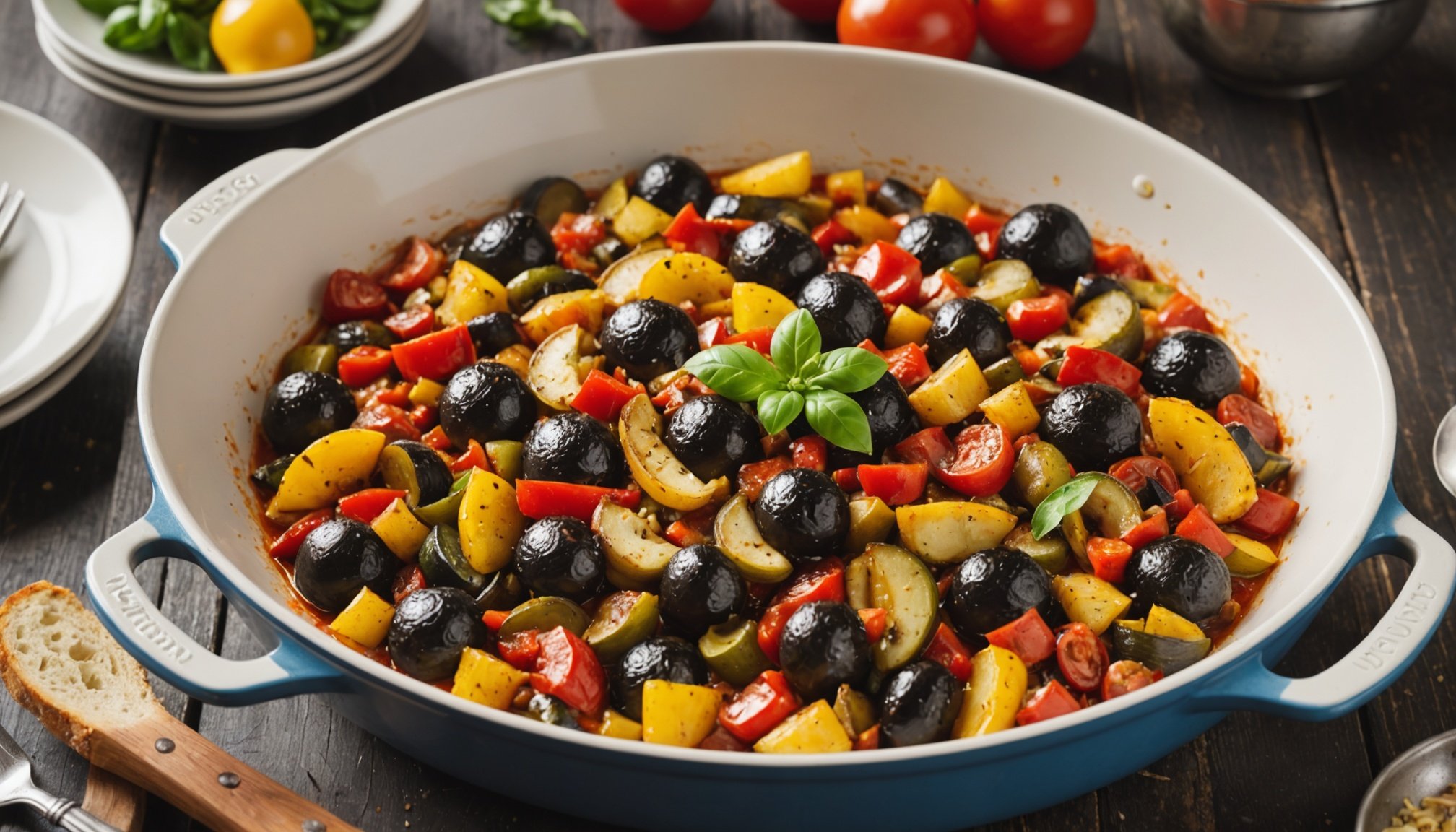Ratatouille is more than just a dish; it is a celebration of fresh vegetables and the vibrant flavors of the season. Originating from the Provence region of France, this classic recipe showcases an array of produce, allowing you to adapt it to the seasonal bounty available in your area. Whether you are a culinary novice or a seasoned chef, understanding how to skillfully combine vegetables such as eggplant, zucchini, tomatoes, and bell peppers will elevate your cooking. In this article, we will guide you through the process of creating a delightful ratatouille, with a focus on incorporating fresh, seasonal ingredients and expertly balancing flavors.
Understanding Seasonal Ingredients
Using seasonal ingredients is fundamental to achieving the best flavors in any dish, including ratatouille. Seasonal vegetables are not only fresher and tastier; they also boast a higher nutrient content. When you choose eggplant, zucchini, tomatoes, and bell peppers that are in season, you’re ensuring that your ratatouille is as flavorful as possible.
In parallel : What are the best practices for making a flavorful beef Wellington?
In the summer months, vibrant red tomatoes and tender zucchini are abundant. Eggplants are at their peak, offering a rich, creamy texture that complements the other vegetables beautifully. Bell peppers, especially the sweet red variety, add a crunchy contrast and a hint of sweetness. During the fall, consider adding butternut squash or even carrots for a touch of sweetness and warmth.
As you prepare your ratatouille, don’t shy away from experimenting with local produce. Visit your farmer’s market to discover what is in season. You may find vegetables that you hadn’t considered before, which can add depth to your dish. Fresh herbs like basil, thyme, and parsley also enhance the flavor profile and can be incorporated into your cooking as they are harvested at the same time as your vegetables.
This might interest you : What techniques should you use to perfectly poach an egg for Eggs Benedict?
Ultimately, understanding seasonal ingredients allows you to create a ratatouille that reflects the essence of the time of year. By incorporating what is fresh and available, you assure that your dish is not only delicious but also sustainable.
The Classic Ratatouille Recipe
Creating a ratatouille is a simple process that involves meticulous layering of vegetables and careful cooking techniques. To begin, gather your ingredients: fresh eggplant, zucchini, red bell peppers, tomatoes, and a good quality olive oil. You will also need salt and pepper to taste.
Start by prepping your vegetables. Dice your eggplant into cubes, slice the zucchini, and chop the bell peppers into bite-sized pieces. For the tomatoes, you can choose to peel them or leave the skin on for added texture. Each vegetable contributes its own unique flavor and texture to the final dish.
In a large skillet, heat a generous splash of olive oil over medium heat. Begin by sautéing the eggplant as it tends to absorb a lot of oil. Cook for about 5-7 minutes, until it becomes tender. Then, add the zucchini and bell peppers, cooking for another 5 minutes. Season with salt and pepper to enhance the flavors. Finally, add the chopped tomatoes and let the mixture simmer. Allowing the tomatoes to break down will create a rich sauce that binds the vegetables together.
Once everything is combined, reduce the heat and let your ratatouille simmer for about 20-30 minutes. Stir occasionally and taste as you go, adjusting the seasoning as necessary. The longer it cooks, the more the flavors meld together. When finished, serve your ratatouille warm, allowing the vibrant colors of the vegetables to shine.
Tips for Perfecting Your Ratatouille
While the classic ratatouille recipe provides a solid foundation, there are several tips you can employ to elevate your dish even further. One critical aspect is to ensure that the vegetables you choose are of the highest quality. Look for fresh, firm vegetables with rich colors. Avoid those with blemishes, as this could affect the flavor and texture of your final dish.
Another important tip is to consider how you layer your ingredients. Traditional ratatouille is often prepared in a layered style, which not only looks beautiful but also creates a harmonious blend of flavors. After sautéing your vegetables, you can choose to layer them in a baking dish, alternating with herbs and spices for added depth.
If you are craving a different texture, consider grilling your vegetables before adding them to the sauce. This can introduce a smoky flavor that contrasts nicely with the freshness of the other ingredients. Additionally, you can experiment with different types of olive oil. A robust, peppery olive oil can add a punch to the dish, while a milder one may allow the vegetables to shine more brightly.
Lastly, remember that ratatouille is incredibly versatile. Feel free to add your favorite vegetables or even proteins like chicken or chickpeas for added substance. The beauty of this dish lies in its adaptability, allowing you to incorporate what you have on hand or what is fresh and seasonal.
Serving Suggestions and Pairings
Once your ratatouille is ready, the next step is to think about how you want to serve it. This dish is incredibly versatile and can be enjoyed on its own as a light meal, or as a side to a heartier main course. When serving ratatouille, consider pairing it with crusty bread for a rustic touch. The bread can soak up the delicious sauce, making each bite irresistible.
For those looking for a complete meal, ratatouille pairs beautifully with grilled meats or fish. The robust flavors of the vegetables complement grilled chicken, lamb, or even salmon, creating a flavorful feast. You can also serve it over a bed of rice or alongside quinoa for a more filling option.
If you want to enhance the flavors even further, garnish your ratatouille with freshly chopped herbs just before serving. Basil or parsley can add a pop of color and freshness that elevates the dish. A sprinkle of feta cheese or a drizzle of balsamic reduction can also offer a delightful contrast of flavors.
Lastly, consider the time of year when serving your ratatouille. In the summer, serve it chilled as a refreshing dish. In colder months, it’s perfect as a warm, hearty meal that warms the soul. Ratatouille truly shines in any season and can adapt to your dining needs.
Incorporating seasonal vegetables into a classic ratatouille recipe not only enhances the flavor but also celebrates the abundance of nature’s offerings. By understanding the importance of using fresh ingredients and experimenting with your preparations, you can create a dish that is both delicious and nourishing. Remember to embrace the versatility of ratatouille, allowing you to adapt it to your tastes and preferences. So, gather your vegetables, fire up the heat, and enjoy the delightful experience of preparing this timeless dish.











